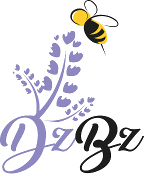Cottonwood Medicine
"Populus" means the peoples' tree. This scientific name comes from the fact that cottonwood has proved to be so useful over the centuries. Many parts of the cottonwood tree are medicinal. A compound called salacin, which is found in the leaves, buds and bark of cottonwood, has been proven to lower
Fevers and reduce
Inflammation and
Pain. The resin has been used to waterproof boxes and baskets, and the bark has been used to make buckets for storing and carrying food.
Cottonwood oil is especially helpful for swollen arthritic joints and sore
Muscles. It is deliciously fragrant and is added to lip balms, body oils and healing salves. The body oil is a nice after-bath
Moisturizer. It also makes excellent massage oil for sore
Muscles. Because cottonwood is high in
Antioxidants, it is useful for healing the
Skin, including
Sunburn. The buds are also anti
Septic and can be added to other herbal oils to prevent rancidity and molding. http://wildfoodsandmedicines.com/test-post/
If one were to come up with a signature for Cottonwood, I would call it "guardian of the waters." In herbalism, a "signature" hails from the "Doctrine of Signatures," the idea that a plant's effects are reflected in its appearance, function, or environment. Seeing a Cottonwood usually signifies that there is a river, creek, oasis, or subterranean water nearby. Groundwater also tends to store up around the Cottonwood's roots, and in the desert, seeing a Cottonwood is a sure sign you will find water. In a way, this relates to its work as a medicine.
I could categorize it with Matthew Wood's "Crane Medicines", which he dubs "bringers of waters." I call it "Heron Medicine" since I see herons so often near these trees, flying or wading, and I feel a stronger connection to the bird myself. Herons are in fact often known to build their "rookeries" or nests in tall Cottonwoods, near water. Crane, or Heron, Medicines emphasize the balances between wet and dry, just as the bird wades in the balance. They are about striking that right balance between excess moisture, and too little, or bringing in needed moisture throughout the organs of our bodies. If this tree medicine acts as a representative of the waters of nature, it certainly works similarly in human physiology; it brings the waters in or plays an important role for water-transport in the organs, most notably the
Kidneys,
Lungs, and
Skin. Indeed, Cottonwood is a sign of relieving water nearby, water to come, or a way of moving water out of the body.
I should certainly note that these effects are better documented and empirically experienced in other members of the Willow family Salicaceae, like Black Poplar (Populus balsamifera), which also goes by the name of Black Cottonwood. Quaking Aspen (Populus tremuloides) and White Willow (Salix alba) are a few others. But it has been found that Cottonwood can be used interchangeably with them, to an extent.
When it comes to "guarding the waters," Cottonwood is a powerful ally to have in the expelling or modulating of water in excess or deficiency. As a folk medicine, Cottonwood and other Willow family members were used for wet, damp
Respiratory afflictions.
Pneumonia,
Bronchitis, and
Asthma are some examples but it may be used to help in any pulmonary condition where the phlegm is stubborn, impedes breathing, and
Cough is unproductive. Considered a both stimulating and relaxing
Expectorant in Traditional Hispanic Herbalism, an internal dosing of the bark or buds would urge the
Lungs to create a thinner, more watery
Mucus that could be easily
Coughed up. The same dose encouraged the
Cough reflex from the
Lungs. Other Willow/Poplar trees in the California-Hispanic tradition were more favored for this use but the Cottonwood is not necessarily one you want to pass up, if it happens to be the only member of that family available to you.
Additionally, in the Hispanic tradition, it was known that Populus species, when used early enough, would inhibit
Bacteria growing in the
Lungs. Today, studies are showing, more and more, that Populus trees including Cottonwood cause 100% cell destruction in
Bacteria causing both
Pneumonia and the flu, Streptococcus
Pneumoniae and Haemophilius
Influenzae.
Cottonwood and its cousins were once one of the most favored medicines against wild
Fevers. In fact, old herbalists were confident in replacing doses of Quinine bark with the bark of the Cottonwood for
Malaria, as the tree is an effective diaphoretic or
Fever-quencher. This is another example of Cottonwood proving to be a useful transporter of fluids, as it allows pores to open, pushing out the sweat and
Toxins of a
Fever through the
Skin, just as the tree in nature pulls water from under the Earth up closer to the surface. What more, the tree was even more help to
Malarial conditions as a
Diuretic. Old herbalists and practitioners found that while using the bark to usher out the
Fever of
Malaria, it simultaneously brought a cleansing, tonifying action to damaged
Kidneys,
Liver, and
Stomach- organs that are at the complete mercy of such intense
Fevers.
Yet there is still so much more to this tree. It expels
Diarrhea, helps recovery from scurvy, and I would recommend having it on hand for periods- a few cups of Cottonwood bark tea has allayed some of my worst
Cramps. It can also serve to regulate
Menstrual irregularities. As a
Tonic, it is excellent for building up and strengthening from the
Kidneys and on outward. It should be noted that Cottonwood bark should not be used if there is acute irritation or illness in the gastro-intestinal system, uterus,
Bladder, or
Prostate.
https://deernationherbs.com/tag/medicinal-uses-of-cottonwood/


